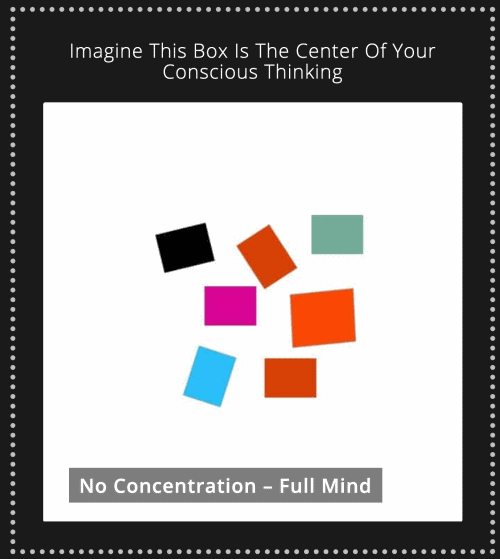Are Mental Problems the Absence of Mental Health?
No, mental problems have not to be the result of any disorder. When it comes to understanding mental health and mental problems, it’s easy to fall into the trap of seeing them as opposites: if you have mental problems, you lack mental health, and if you’re mentally healthy, you must be free of problems. But is it really that simple? The truth is far more nuanced, involving a complex interplay of factors that influence our psychological well-being. Let’s delve into whether mental problems are truly the absence of mental health, or if the relationship is more sophisticated.
Mental health is often defined as a state of well-being in which individuals can cope with the normal stresses of life, work productively, and contribute to their communities. It’s not merely the absence of a diagnosable condition, but a positive state that includes emotional, psychological, and social well-being. In contrast, mental problems—such as anxiety, depression, or obsessive thoughts—represent disturbances in these areas that may prevent someone from functioning at their full potential.
Interestingly, mental health and mental problems are not two ends of a single spectrum. An individual may experience mental health challenges without completely losing their sense of mental well-being. For example, someone might struggle with intrusive thoughts or mild anxiety but still find joy, connect meaningfully with others, and perform well in their daily activities. This suggests that mental problems can coexist with positive aspects of mental health.
The “Dual-Continuum” Model
To better understand this complexity, mental health professionals often refer to the “dual-continuum” model. This model posits that mental health and mental problems exist on two separate but related axes. In other words, it is possible to have high mental well-being despite experiencing certain mental problems, just as it is possible to lack well-being even in the absence of diagnosable issues.
Imagine a graph: One axis represents the severity of mental health issues, while the other represents overall well-being. An individual could have low levels of diagnosable issues (e.g., no severe anxiety or depression) but also have low well-being (e.g., feeling disconnected or lacking purpose). Conversely, someone could experience a diagnosable condition like generalized anxiety disorder but maintain a relatively high level of well-being through strong relationships, coping mechanisms, and meaningful activities.
Mental Problems Aren’t Just the Lack of Mental Health
Mental problems are not merely an indicator of poor mental health; they are often symptoms of an imbalance or response to external pressures, trauma, or biological factors. For instance, rumination—a form of repetitive negative thinking—doesn’t simply signal a lack of mental well-being but can also be a habitual cognitive pattern, deeply influenced by automatic thinking processes (what Daniel Kahneman and Amos Tversky termed System 1 thinking).
Instead of viewing mental problems as a direct negation of mental health, it is more accurate to see them as disruptions that affect certain aspects of a person’s mental landscape. These disruptions may lower one’s capacity for emotional resilience or interfere with daily life, but they don’t necessarily mean that all dimensions of mental health are absent. An individual can still possess strengths and positive coping strategies, even amid challenges.
Moving Beyond the Binary: A Holistic Perspective
This understanding encourages a more holistic view of mental health. It allows us to recognize that experiencing mental problems does not mean someone is devoid of all positive mental health qualities. Just as physical health is not merely the absence of disease but the presence of strength, vitality, and resilience, mental health encompasses more than just freedom from diagnosable conditions.
Moreover, viewing mental problems solely as a lack of health can contribute to stigmatization. It perpetuates the idea that individuals facing mental problems are fundamentally different or broken. By understanding that mental problems can coexist with elements of well-being, we foster a more compassionate and realistic view of what it means to be mentally healthy.
The Role of Techniques Like Excentration
An effective approach to managing mental problems is to utilize techniques that address both fast, automatic thinking (System 1) and slow, deliberate thinking (System 2). The Excentration Technique, as introduced in the e-book “Mind Rooms,” offers such a solution by allowing individuals to create mental “rooms” where intrusive thoughts can be stored, thus reducing their emotional intensity. This way, individuals can maintain a level of mental well-being while dealing with their challenges more effectively.
By employing dual strategies that work with both the automatic and analytical aspects of the mind, people can achieve a balance where mental problems do not entirely erase their mental health. This nuanced approach highlights that mental well-being is achievable even in the presence of mental struggles.
Conclusion: A Spectrum of Experience
Ultimately, mental problems are not simply the absence of mental health. Mental health is a dynamic, multifaceted state that can coexist with challenges. By acknowledging that mental problems and mental health are interrelated but not mutually exclusive, we can better support ourselves and others in striving for psychological well-being.
Instead of viewing mental struggles as an all-or-nothing indicator, it helps to adopt a spectrum perspective—one that recognizes that thriving is possible even amid challenges. This not only reduces the stigma but also opens up more opportunities for interventions and growth, fostering resilience and a deeper understanding of the human experience.
